Keywords:NVIDIA, OpenAI, AI data center, Claude Sonnet 4.5, GLM-4.6, DeepSeek-V3.2, AI regulation, VERA RUBIN platform, Claude Agent SDK, sparse attention mechanism, SB 53 bill, AI video generation
🔥 Focus
NVIDIA Invests $100 Billion in OpenAI to Build 10GW AI Data Center: NVIDIA announced a $100 billion investment in OpenAI to construct a 10-gigawatt (equivalent to 10 nuclear power plants) AI data center, which will be based on NVIDIA’s VERA RUBIN platform. This move heralds a massive leap in AI computing infrastructure, potentially reshaping the AI economic landscape and raising profound implications for smaller competitors and energy environmental sustainability.
(Source: Reddit r/ArtificialInteligence)

Gemini Core Figure Dustin Tran Joins xAI: Dustin Tran, former senior researcher at Google DeepMind and co-creator of Gemini DeepThink, announced his move to Elon Musk’s xAI. During his tenure at Google, Tran led the development of the Gemini model series, demonstrating SOTA-level reasoning capabilities in competitions such as IMO and ICPC. He stated that he chose xAI due to its massive computing power (including hundreds of thousands of GB200 chips), data strategy (scaling RL and post-training), and Musk’s hardcore philosophy, while also questioning OpenAI’s innovation capabilities.
(Source: 量子位, teortaxesTex)

California Signs First AI Safety Bill SB 53: California Governor signed SB 53, setting transparency requirements for frontier AI companies to provide more data on AI systems and their developers. Anthropic expressed support for the bill, marking significant progress in AI regulation at the local level and emphasizing AI companies’ responsibility in system development and data transparency.
(Source: AnthropicAI, Reddit r/ArtificialInteligence)

🎯 Developments
Anthropic Releases Claude Sonnet 4.5 and Ecosystem Updates: Anthropic launched the Claude Sonnet 4.5 model, hailed as the world’s best coding model, achieving SOTA results (77.2%/82.0%) on the SWE-Bench benchmark and demonstrating 30+ hours of autonomous coding capability in agentic tasks. The new model shows significant improvements in safety, alignment, reward hacking, deception, and flattery, and optimizes conversational context compression, enabling better “state management” or “note-taking.” Concurrently, Anthropic also released a series of ecosystem updates, including Claude Code 2.0, API updates (context editing, memory tools), a VS Code extension, a Claude Chrome extension, and Imagine with Claude, aiming to enhance its performance in coding, agent building, and daily tasks.
(Source: Yuchenj_UW, scaling01, cline, akbirkhan, EthanJPerez, akbirkhan, zachtratar, EigenGender, dotey, claude_code, max__drake, scaling01, scaling01, akbirkhan, swyx, Reddit r/ArtificialInteligence, Reddit r/artificial)
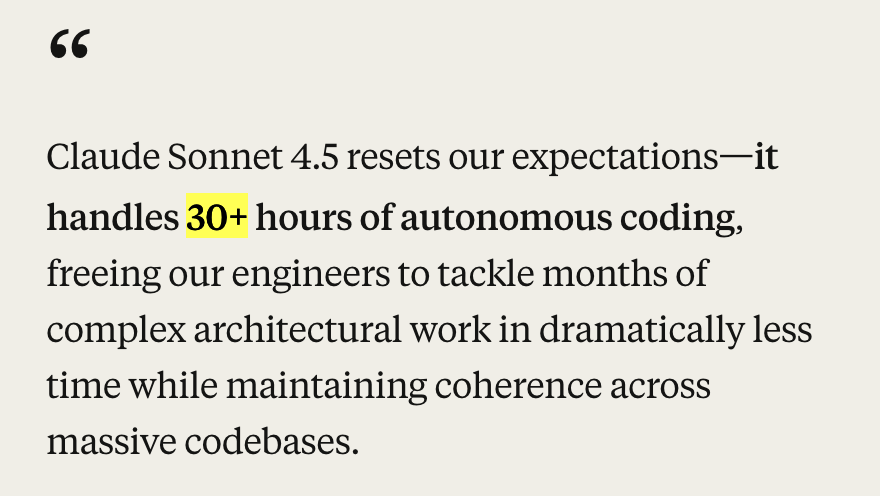
Zhipu AI Releases GLM-4.6 Model: Zhipu AI released the GLM-4.6 language model, featuring several significant improvements over GLM-4.5, including an expanded context window from 128K to 200K tokens to handle more complex agent tasks. The model performs stronger in coding benchmarks and real-world applications (such as Claude Code, Cline, Roo Code, and Kilo Code), particularly improving the generation of exquisite front-end pages. GLM-4.6 also enhances reasoning capabilities and tool use during inference, boosts agent performance, and better aligns with human preferences. It demonstrates competitiveness with Claude Sonnet 4 and DeepSeek-V3.1-Terminus in multiple benchmarks and is planned for open-sourcing on Hugging Face and ModelScope soon.
(Source: teortaxesTex, scaling01, teortaxesTex, Tim_Dettmers, Teknium1, Zai_org, Reddit r/LocalLLaMA, Reddit r/LocalLLaMA, Reddit r/LocalLLaMA, Reddit r/LocalLLaMA)

OpenAI Launches ChatGPT Instant Checkout and Sora 2 Video Social App: OpenAI launched “Instant Checkout” in the US, allowing users to complete purchases directly within ChatGPT, in partnership with Etsy and Shopify, and open-sourced the Agentic Commerce Protocol. This move aims to create an ecosystem loop and enhance the shopping experience. Additionally, OpenAI is preparing to launch Sora 2, an AI-generated video social application similar to TikTok, where users can create video clips up to 10 seconds long. These actions indicate OpenAI’s acceleration of commercialization and monetization, potentially impacting existing e-commerce and short-video markets.
(Source: OpenAI要刮油,谁会掉层皮?, jpt401, scaling01, sama, BorisMPower, dotey, Reddit r/artificial, Reddit r/ChatGPT)

DeepSeek-V3.2-Exp Released, Introducing Sparse Attention Mechanism: DeepSeek released the experimental model DeepSeek-V3.2-Exp, whose core highlight is the introduction of the DeepSeek Sparse Attention (DSA) mechanism, aimed at improving the efficiency and performance of long-context inference. The model excels in coding, tool use, and long-context reasoning, and supports Chinese chips like Huawei Ascend and Cambricon, while API prices have been reduced by over 50%. However, community feedback indicates that the model exhibits degradation in memory and reasoning, potentially leading to repetitive information, forgotten logical steps, and infinite loops, suggesting it is still in an exploratory phase.
(Source: yupp_ai, Yuchenj_UW, woosuk_k, ZhihuFrontier)
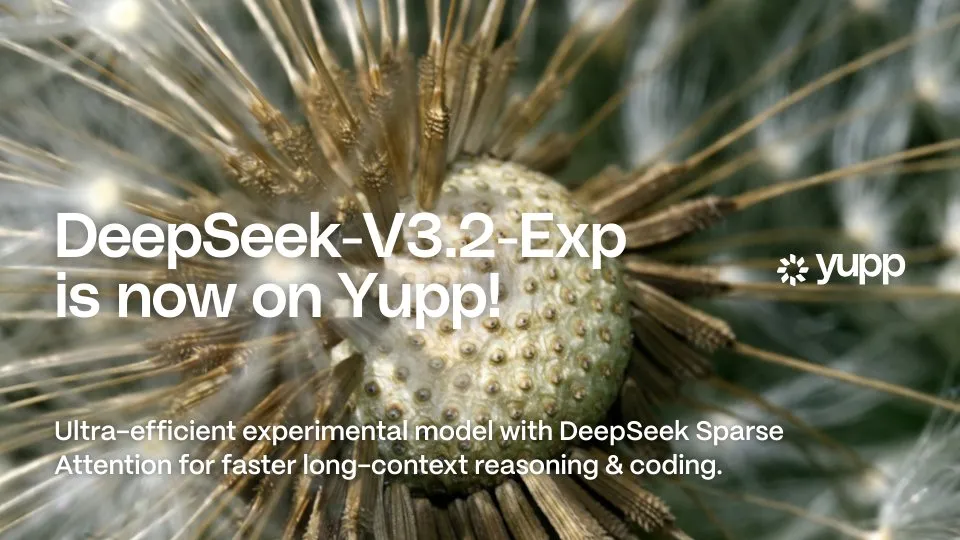
Google Gemini Model Updates and API Deprecation: Google announced the deprecation of the Gemini 1.5 series models (pro, flash, flash-8b), recommending users switch to the Gemini 2.5 series (pro, flash, flash-lite), and provided new preview models gemini-2.5-flash-preview-09-2025 and gemini-2.5-flash-lite-preview-09-2025. Furthermore, the Gemini API is actively evolving to support Agentic use cases, signaling deeper integration of AI agents into applications in the future.
(Source: _philschmid, osanseviero)
inclusionAI Releases Ring-1T-preview: Trillion-Parameter Open-Source Reasoning Model: inclusionAI released Ring-1T-preview, the first trillion-parameter-level open-source “thinking model” with 50B active parameters. The model achieved early SOTA results in natural language processing tasks (such as AIME25, HMMT25, ARC-AGI-1) and can even solve IMO25 Q3 problems in a single attempt. This release marks a significant breakthrough for the open-source community in large reasoning models, despite its extremely high hardware resource requirements (e.g., RAM).
(Source: ClementDelangue, Reddit r/LocalLLaMA, Reddit r/LocalLLaMA)
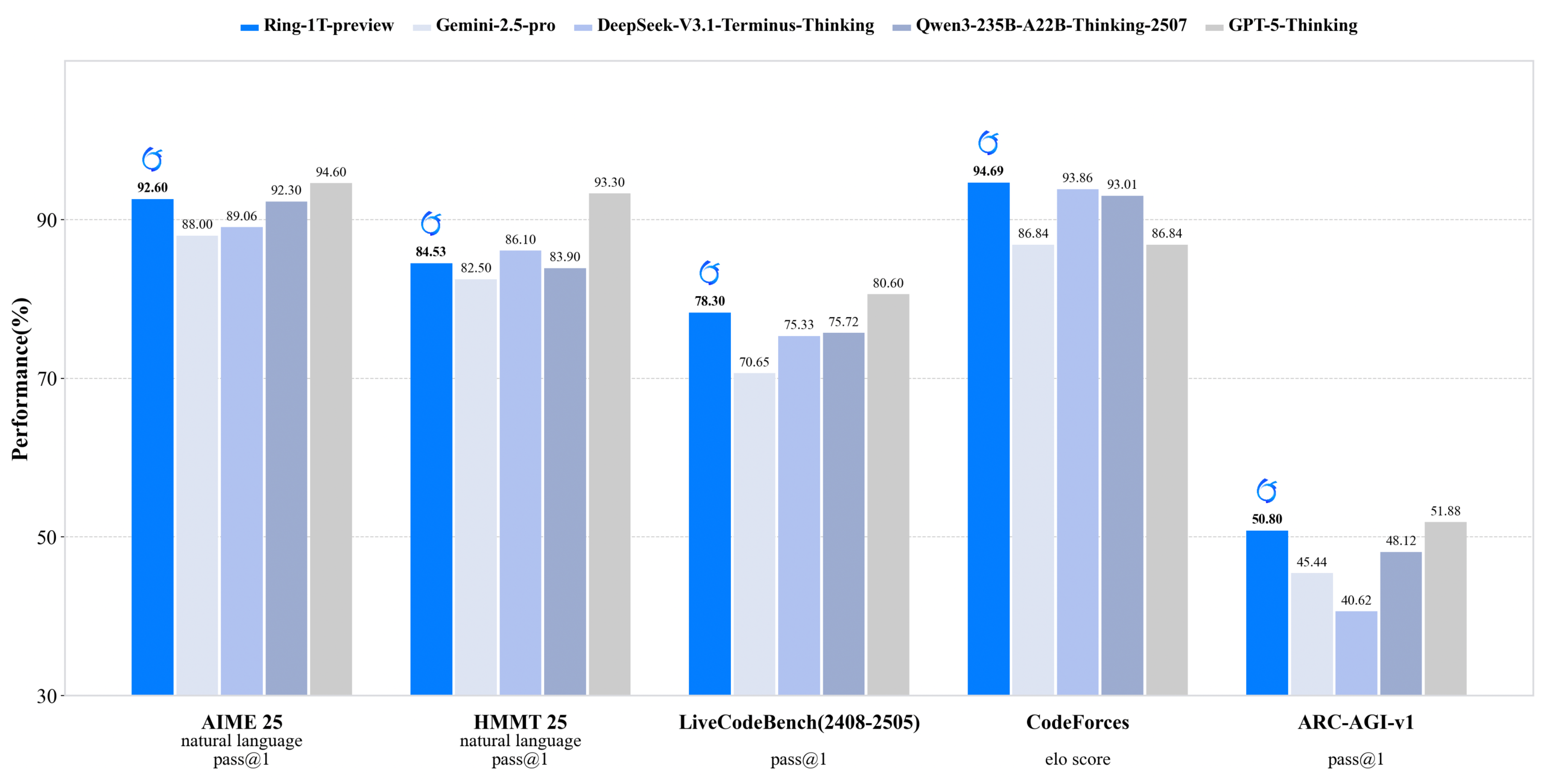
Unitree Robotics Exposed to Severe Wireless Security Vulnerabilities, Official Response Confirms Fixes Underway: Multiple robot models from Unitree Robotics (including Go2, B2 quadruped robots, and G1, H1 humanoid robots) were exposed to severe wireless security vulnerabilities. Attackers could bypass authentication via the Bluetooth Low Energy (BLE) interface, gain root privileges, and even achieve worm-like infection between robots. Unitree officially established a product security team and stated that most repair work has been completed, with updates to be pushed out successively, and thanked external oversight.
(Source: 量子位)

Multiple AI Video Generation Models and Platforms Updated: Jiemeng (Omnihuman 1.5) launched on the web, significantly enhancing digital human performance and motion control capabilities, transforming creation from “mysticism” to “engineering.” Alibaba’s Wan 2.5 Preview was also released, notably improving instruction understanding and adherence, supporting structured prompts, and capable of generating smooth 10-second 1080P 24fps videos. Additionally, Google’s Veo 3 demonstrated an understanding of physical phenomena in img2vid tests, capable of simulating scenarios like pouring water into a cup.
(Source: op7418, Alibaba_Wan, demishassabis, multimodalart)
New Advances in AI for Healthcare: Florida doctors successfully performed prostate surgery on a patient 7,000 miles away using AI technology, showcasing AI’s immense potential in telemedicine and surgical procedures. Furthermore, Yunpeng Technology, in collaboration with ShuaiKang and Skyworth, released smart refrigerators equipped with AI health large models and a “Digitalized Future Kitchen Lab,” offering personalized health management through “Health Assistant Xiaoyun” and promoting AI’s application in daily health management.
(Source: Ronald_vanLoon)
Rise of Chinese Chips and ML Compiler TileLang: The release of DeepSeek-V3.2 highlights the rise of Chinese chips, with Day-0 support for Huawei Ascend and Cambricon. Concurrently, DeepSeek adopted the ML compiler TileLang, allowing users to achieve nearly 95% of FlashMLA (CUDA handwritten) performance with 80 lines of Python code, compiling Python into kernels optimized for various hardware (Nvidia GPU, Chinese chips, inference-specific chips). This suggests that ML compilers will again play a crucial role as the hardware landscape diversifies.
(Source: Yuchenj_UW)
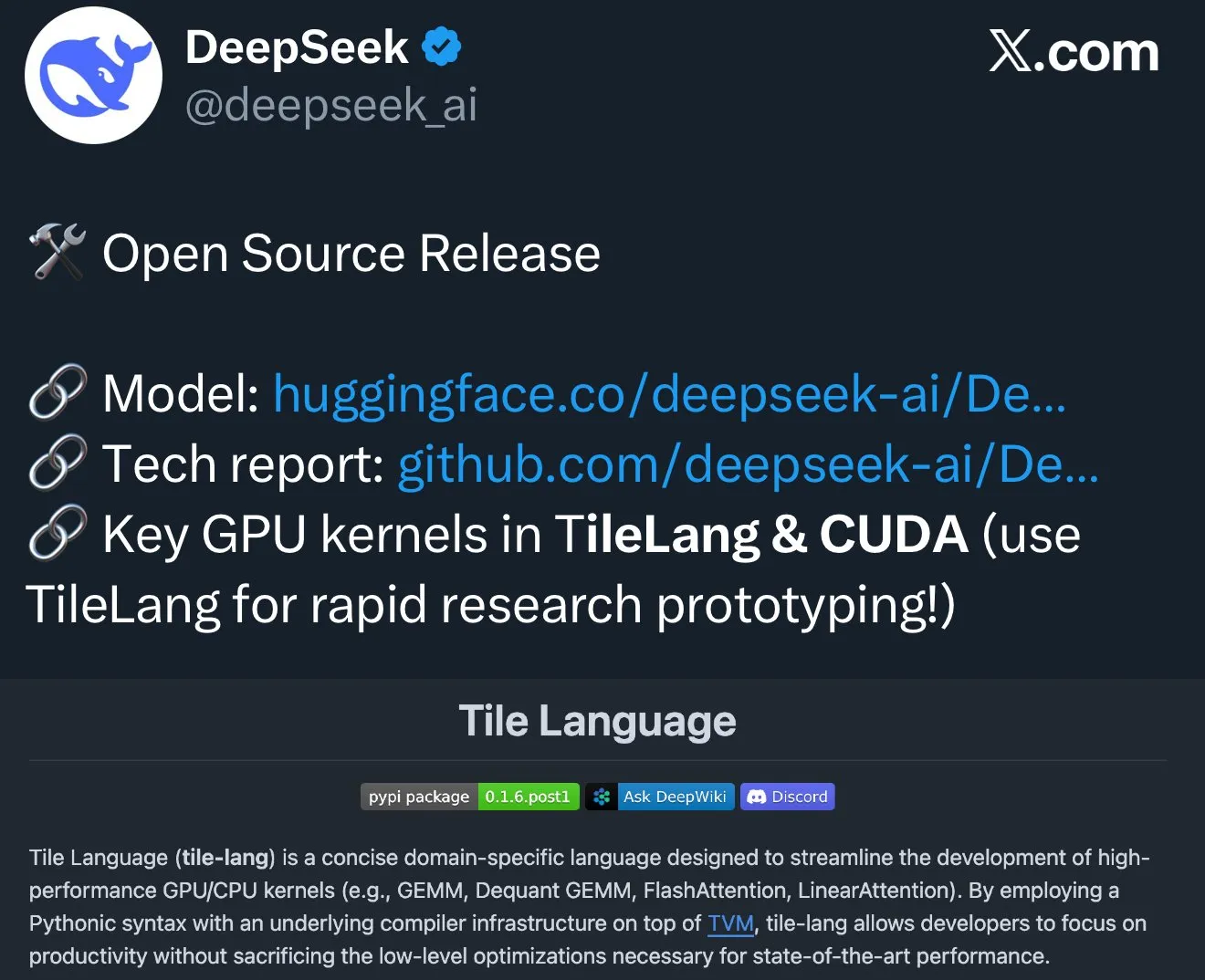
🧰 Tools
Claude Agent SDK for Python: Anthropic released the Python version of the Claude Agent SDK, supporting bidirectional interactive conversations with Claude Code and allowing the definition of custom tools and hooks. Custom tools run as in-process MCP servers, eliminating subprocess management for better performance, simpler deployment, and debugging. The hook functionality allows Python functions to be executed at specific points in the Claude agent loop, providing deterministic processing and automated feedback.
(Source: GitHub Trending, bookwormengr, Teknium1)
Handy: Free Offline Speech-to-Text Application: Handy is a free, open-source, and extensible cross-platform desktop application built with Tauri (Rust + React/TypeScript), offering privacy-preserving offline speech-to-text functionality. It supports Whisper models (including GPU acceleration) and Parakeet V3 (CPU optimized, automatic language detection). Users can transcribe speech to text and paste it into any text field via hotkeys, with all processing done locally.
(Source: GitHub Trending)
Ollama Python Library: The Ollama Python library provides an easy way to integrate with Ollama for Python 3.8+ projects. It supports API operations such as chat, generate, list, show, create, copy, delete, pull, push, and embed, and features streaming responses and custom client configuration, making it convenient for developers to run and manage large language models locally in Python applications.
(Source: GitHub Trending)
LLM.Q: Quantized LLM Training on Consumer GPUs: LLM.Q is a quantized LLM training tool implemented purely in CUDA/C++, allowing users to perform native quantized matrix multiplication training on consumer-grade GPUs. This enables training custom LLMs on a single workstation without requiring data centers. Inspired by karpathy’s llm.c, this tool adds native quantization, lowering the hardware barrier for LLM training.
(Source: giffmana)
AMD Collaborates with Cline to Promote Local AI Coding: AMD is collaborating with Cline to provide solutions for local AI coding, leveraging AMD Ryzen AI Max+ series processors. Tested recommended local model configurations include: Qwen3-Coder 30B (4-bit) for 32GB RAM, Qwen3-Coder 30B (8-bit) for 64GB RAM, and GLM-4.5-Air for 128GB+ RAM. This allows users to quickly set up local AI coding environments using LM Studio and Cline.
(Source: cline, Hacubu)
📚 Learn
LoRA Fine-tuning vs. Full Fine-tuning Performance Comparison: Research by Thinking Machines indicates that LoRA (Low-Rank Adaptation) fine-tuning often matches or even exceeds the performance of full fine-tuning, making it a more accessible fine-tuning method. LoRA/QLoRA is cost-effective and performs well on low-memory devices, allowing for multiple inexpensive deployments, providing an efficient LLM fine-tuning solution for resource-constrained developers.
(Source: RazRazcle, madiator, crystalsssup, eliebakouch, TheZachMueller, algo_diver, ben_burtenshaw)
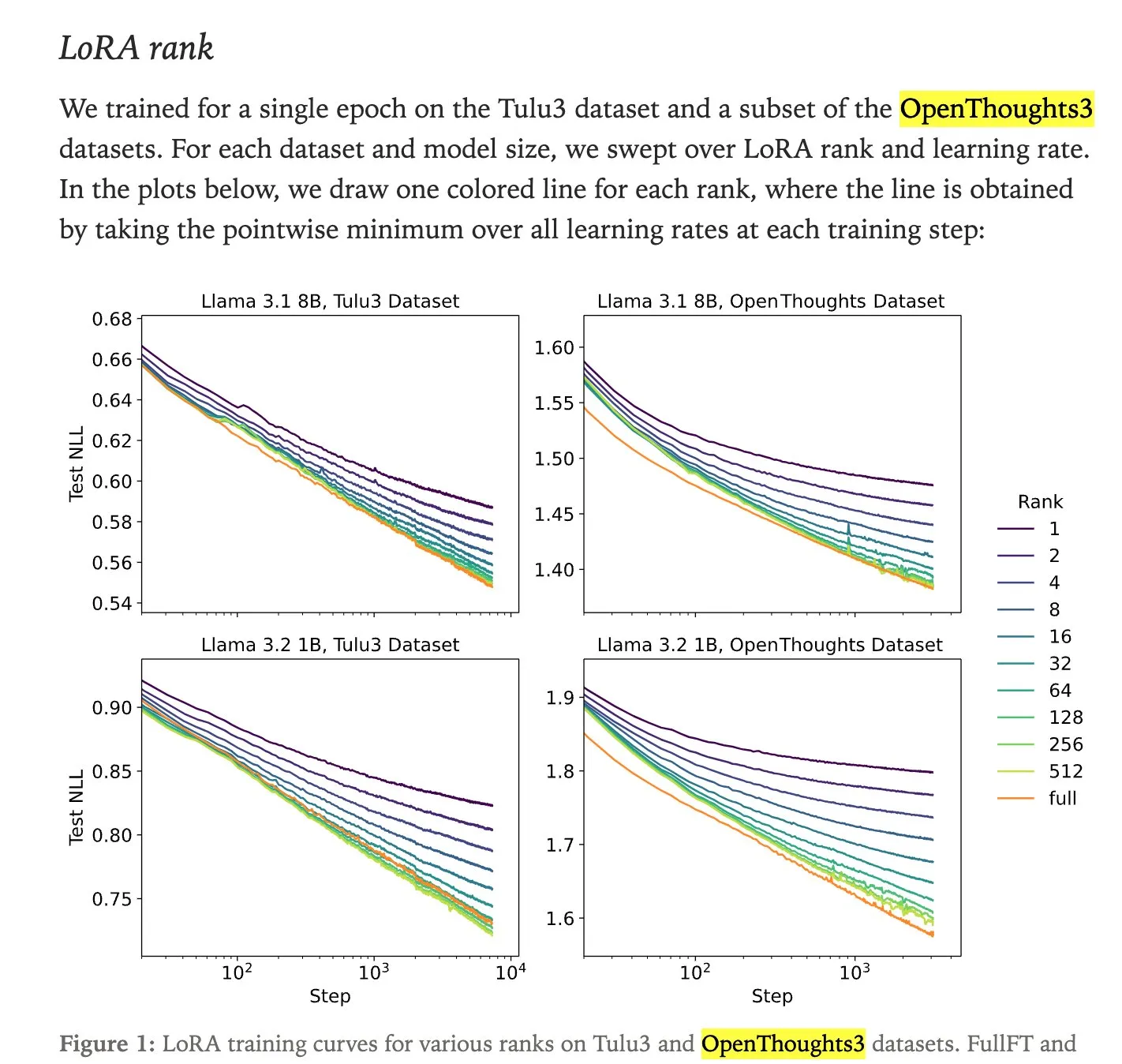
DeepSeek Sparse Attention (DSA) Technical Analysis: The DeepSeek Sparse Attention (DSA) mechanism introduced in DeepSeek-V3.2 operates through two components: “Lightning Indexer” and “Sparse Multi-Latent Attention (MLA).” The Indexer maintains a small key cache and scores incoming queries, selecting Top-K tokens to pass to the Sparse MLA. This method performs well in both long and short context scenarios and is optimized through continuous learning settings to maintain performance and reduce computational costs.
(Source: ImazAngel, bigeagle_xd, teortaxesTex, teortaxesTex, LoubnaBenAllal1)
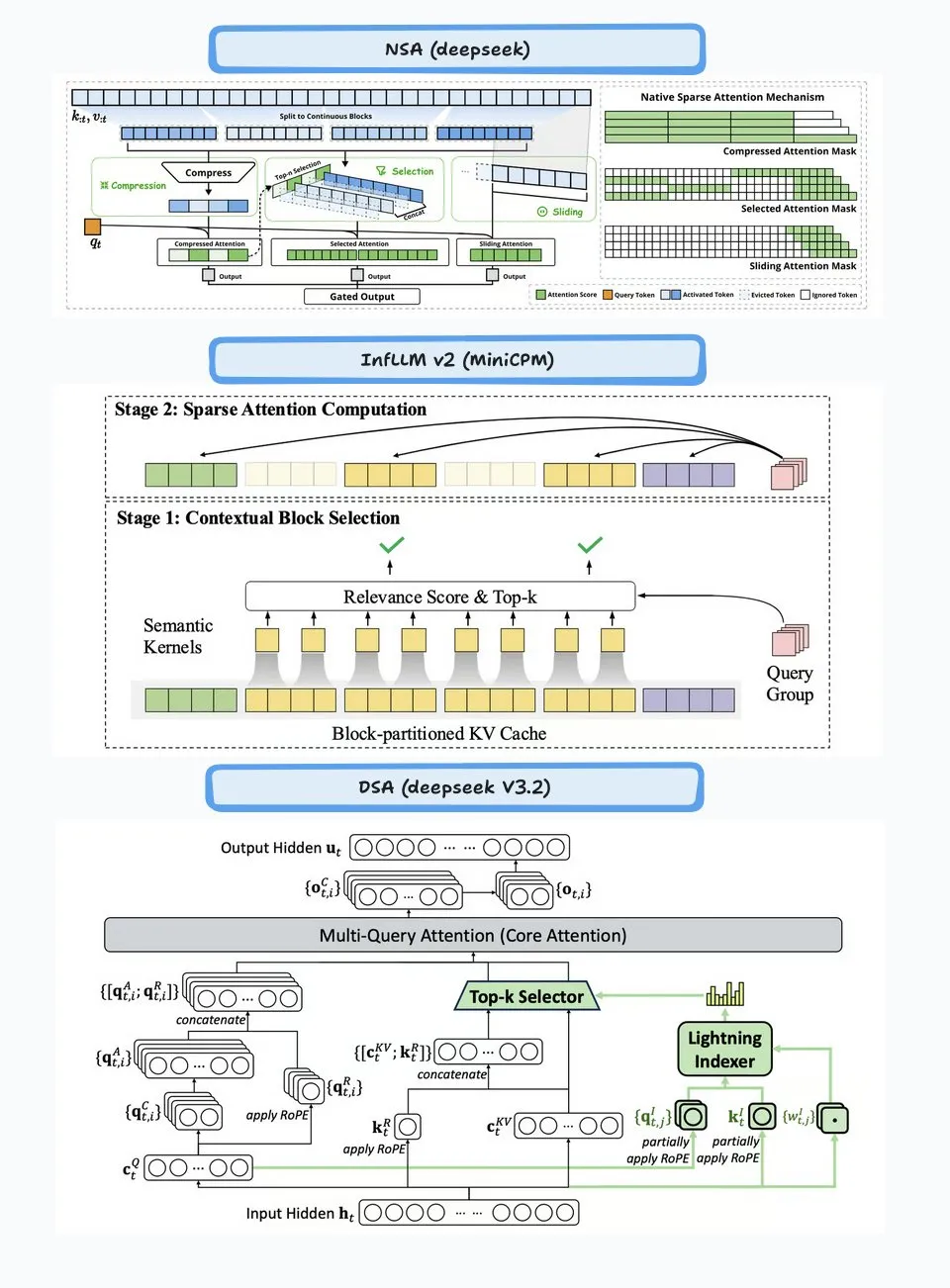
Comparison of Reinforcement Learning Algorithms PPO, GRPO, and REINFORCE: TuringPost provides a detailed analysis of the workflows of three reinforcement learning algorithms: PPO, GRPO, and REINFORCE. PPO maintains stability and sample efficiency by clipping the objective function and controlling KL divergence; GRPO-MA reduces gradient coupling and instability through multi-answer generation, especially suitable for reasoning tasks; REINFORCE, as the foundation of policy gradient algorithms, updates policies directly based on full episode returns. These algorithms each have advantages in LLM training and inference, with GRPO-MA showing higher efficiency and stability, particularly in complex reasoning tasks.
(Source: TheTuringPost, TheTuringPost, TheTuringPost, TheTuringPost, TheTuringPost)
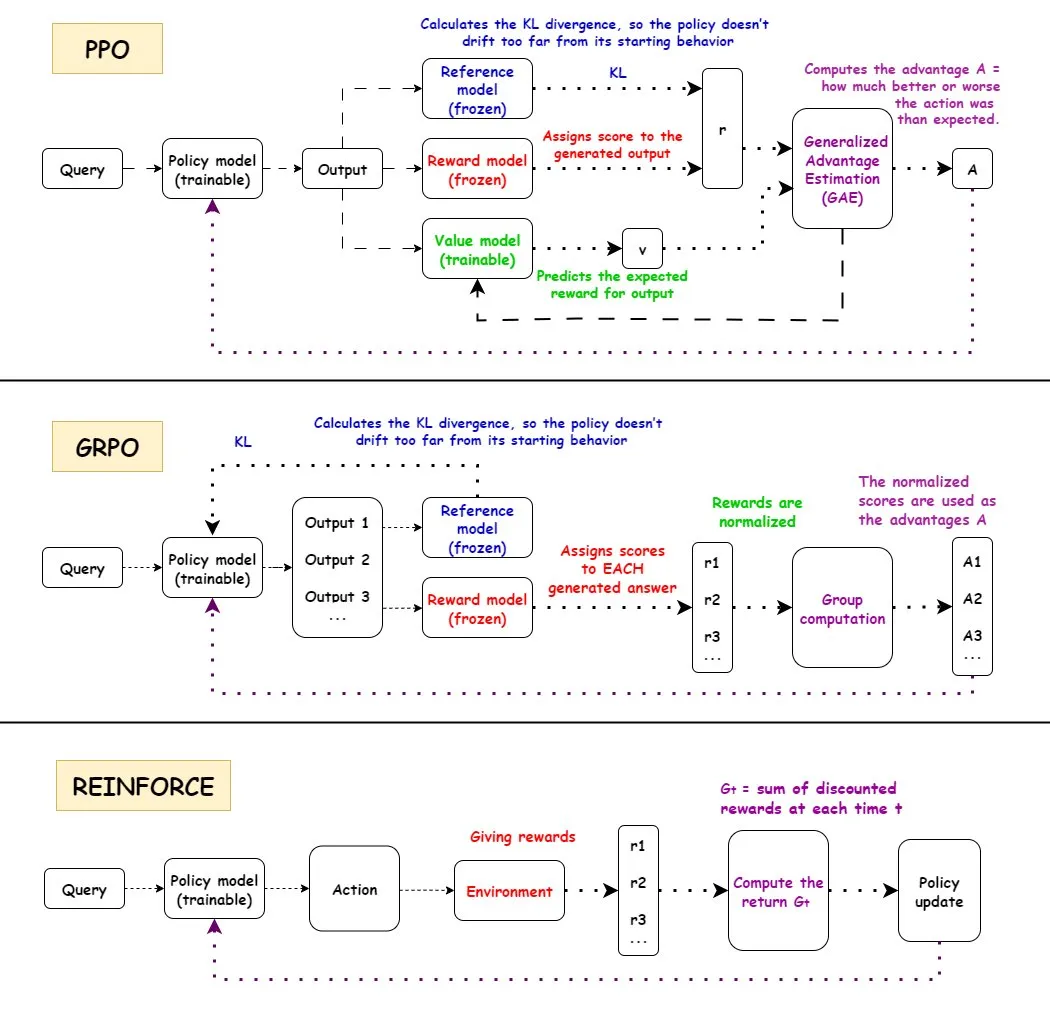
NVIDIA Blackwell Architecture Deep Dive: TuringPost hosted a deep dive workshop on NVIDIA Blackwell, inviting Dylan Patel from SemiAnalysis and Ia Buck from NVIDIA to discuss the Blackwell architecture, its workings, optimizations, and implementation in GPU clouds. Blackwell, as the next-generation GPU, aims to reshape AI computing infrastructure, and its technical details and deployment strategies are crucial for the future development of the AI industry.
(Source: TheTuringPost, dylan522p)
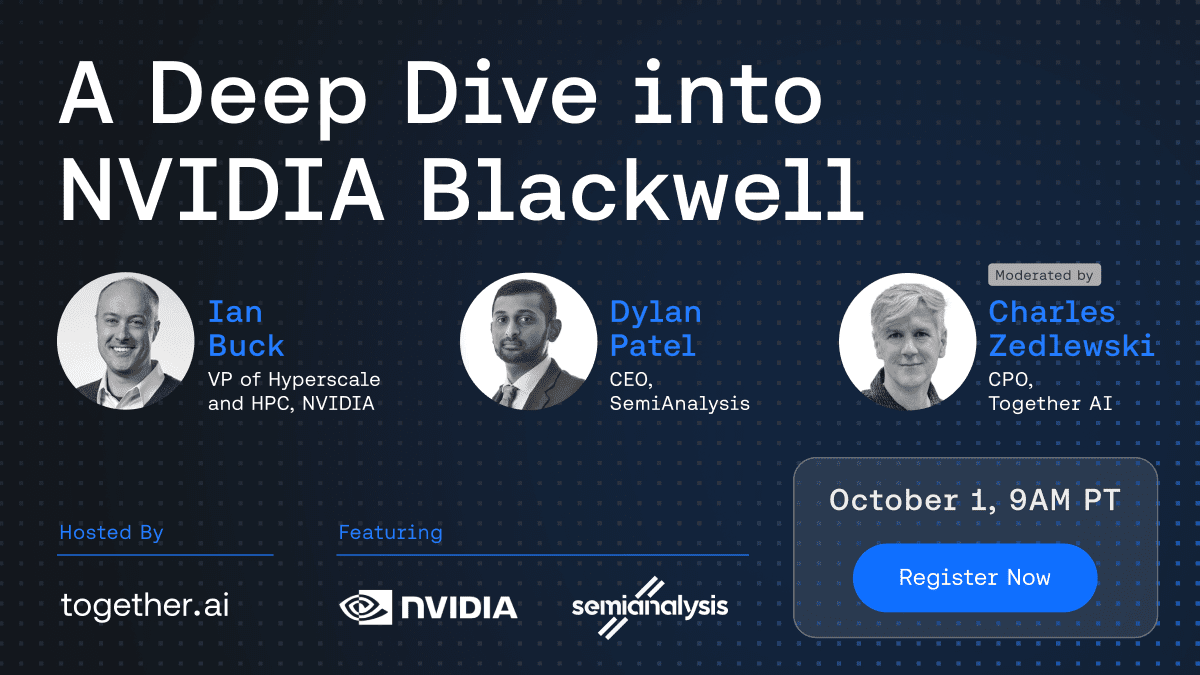
NVIDIA NVFP4: 4-bit Pre-trained 12B Mamba Transformer: NVIDIA announced NVFP4 technology, demonstrating that on the Blackwell architecture, a 4-bit pre-trained 12B Mamba Transformer model can match FP8 precision over 10T tokens, while being more computationally and memory efficient. NVFP4 achieves mathematical stability and accuracy at low bit widths through block quantization and multi-scale scaling, significantly accelerating large model training and reducing memory requirements.
(Source: QuixiAI)
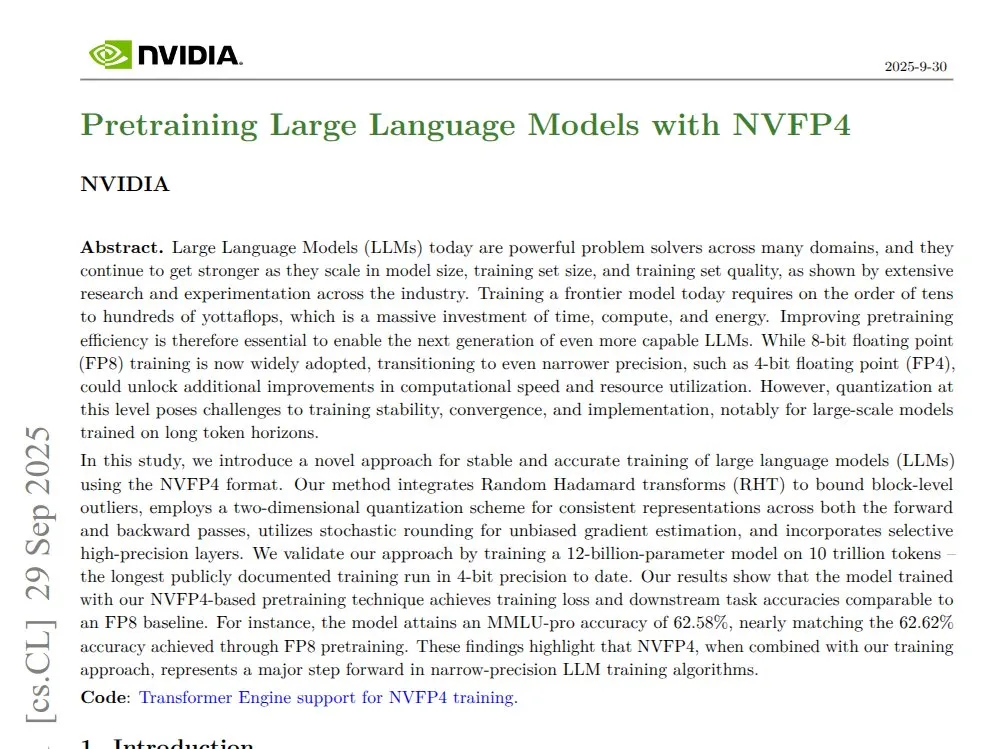
Socratic-Zero: Data-Agnostic Agent Co-evolutionary Reasoning Framework: Socratic-Zero is a fully autonomous framework that generates high-quality training data from minimal seed examples through the co-evolution of three agents: Teacher, Solver, and Generator. The Solver continuously refines reasoning based on preference feedback, the Teacher adaptively creates challenging problems based on Solver weaknesses, and the Generator distills the Teacher’s problem design strategies for scalable curriculum generation. This framework significantly outperforms existing data synthesis methods in mathematical reasoning benchmarks and enables student LLMs to achieve the performance of SOTA commercial LLMs.
(Source: HuggingFace Daily Papers)
PixelCraft: High-Fidelity Visual Reasoning Multi-Agent System for Structured Images: PixelCraft is a novel multi-agent system for high-fidelity image processing and flexible visual reasoning on structured images (e.g., charts and geometric diagrams). It comprises Scheduler, Planner, Reasoner, Critic, and Visual Tool agents, combining MLLMs fine-tuned on high-quality corpora with traditional CV algorithms for pixel-level localization. The system significantly enhances the visual reasoning performance of advanced MLLMs through a dynamic three-stage workflow of tool selection, agent discussion, and self-criticism.
(Source: HuggingFace Daily Papers)
Rolling Forcing: Real-time Autoregressive Long Video Diffusion Generation: Rolling Forcing is a novel video generation technique that enables real-time streaming generation of multi-minute long videos and significantly reduces error accumulation through a joint denoising scheme, attention pooling mechanism, and efficient training algorithm. This technique addresses the severe error accumulation problem in existing methods for long video stream generation, promising to advance interactive world models and neural game engines.
(Source: HuggingFace Daily Papers, _akhaliq)
💼 Business
Modal Completes $87 Million Series B Funding, Valued at $1.1 Billion: Modal announced the completion of an $87 million Series B funding round, valuing the company at $1.1 billion, aimed at driving the future development of AI infrastructure. The Modal platform addresses the issue of resource waste due to over-hyped GPU reservations by charging based on actual GPU usage time, ensuring users only pay for the GPU time they actually run.
(Source: charles_irl, charles_irl, charles_irl)

OpenAI Reports $4.3 Billion in H1 Revenue, $2.5 Billion in Cash Burn: The Information reported that OpenAI achieved $4.3 billion in sales in the first half of 2025, but also incurred cash burn of $2.5 billion. This financial data reveals that while AI large model companies are growing rapidly, they also face immense pressure from R&D and infrastructure investments.
(Source: steph_palazzolo)
EA’s New Owner Plans Significant AI-Driven Cost Cuts: The new owner of gaming giant Electronic Arts (EA) plans to significantly cut operating costs by introducing AI technology. This move reflects AI’s potential for cost reduction and efficiency improvement in corporate operations, but also raises concerns about AI replacing human jobs in creative industries.
(Source: Reddit r/artificial)

🌟 Community
Claude Sonnet 4.5 User Experience and Performance Controversy: Community reviews for Claude Sonnet 4.5 are mixed. Many users praise its advancements in coding, conversational compression, and “state management,” finding it can offer counter-arguments and improvements like a “colleague,” and even performs well in some benchmarks. However, some users express concerns about its high API costs, usage limits (e.g., Opus plan weekly hour caps), and potential for introducing errors in complex tasks (e.g., VictorTaelin’s refactoring case), believing it still falls short of GPT-5 in terms of correctness.
(Source: dotey, dotey, scaling01, Dorialexander, qtnx_, menhguin, dejavucoder, VictorTaelin, dejavucoder, skirano, kylebrussell, Reddit r/ClaudeAI, Reddit r/ClaudeAI)

GPT-5 User Reviews Polarized: Community reviews for GPT-5 are polarized. Some users find GPT-5 excellent for coding and web development, a true upgrade, and appreciate its auto-routing feature. However, a large number of users complain that GPT-5 is far inferior to 4o in personalization, emotional support, and context retention, finding its output “cold, condescending, and even hostile,” and suffering from severe hallucination issues, leading to a degraded user experience, with some even calling it a “failure.”
(Source: williawa, eliebakouch, Reddit r/ChatGPT, Reddit r/ChatGPT, Reddit r/ChatGPT, Reddit r/ChatGPT)

AI’s Role and Controversy in Psychological Support: Many users find AI very helpful for psychological support, providing a non-judgmental, tireless listener that helps them process private issues and neurotic moments, especially beneficial for lonely seniors, disabled individuals, or neurodivergent people. However, this use has also drawn criticism like “AI is not your friend,” accused of “replacing human connection.” The community believes such criticism overlooks AI’s potential as a “mirror” and “scaffold,” as well as the diversity of AI use under different cultural and personal needs.
(Source: Reddit r/ChatGPT, Reddit r/ChatGPT)
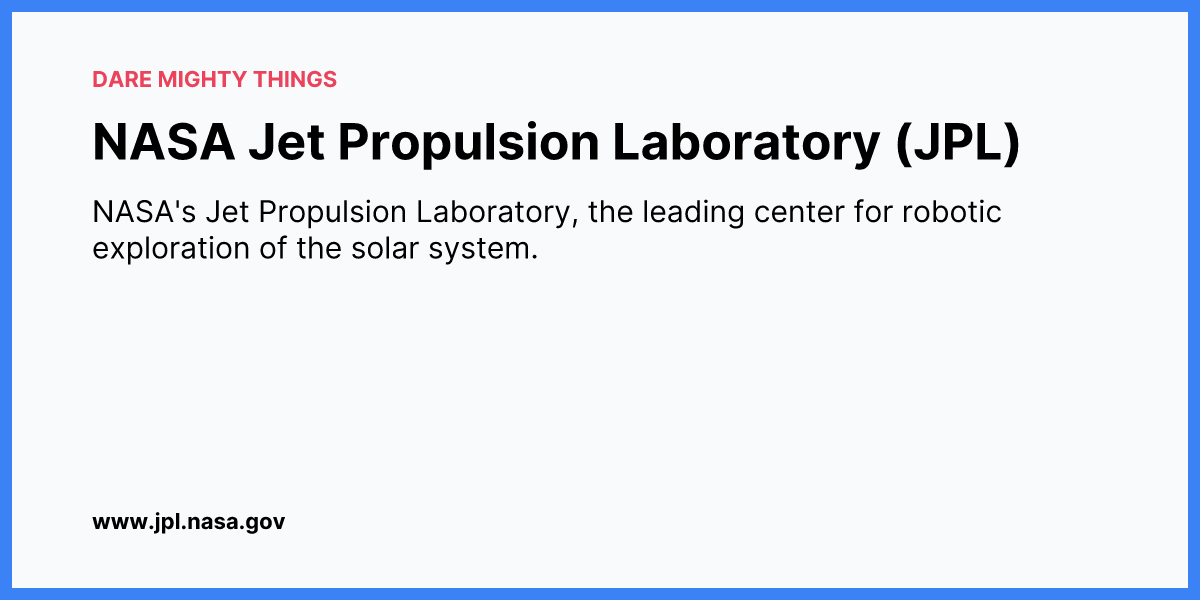
AI’s Impact on Programming Jobs and Agent Tool Controversy: The community discusses AI’s impact on software engineer hiring, believing that while AI tools improve efficiency, experienced engineers are still needed for architectural design, verification, and error correction. Concurrently, there is controversy over the effectiveness of current “Agentic” coding tools, with some arguing that these tools introduce too much middleware and redundant operations, leading to severe context pollution, low efficiency, and poorer quality results when models handle complex problems, making them less effective than direct chat interfaces.
(Source: francoisfleuret, jimmykoppel, Ronald_vanLoon, paul_cal, Reddit r/ArtificialInteligence, Reddit r/LocalLLaMA)
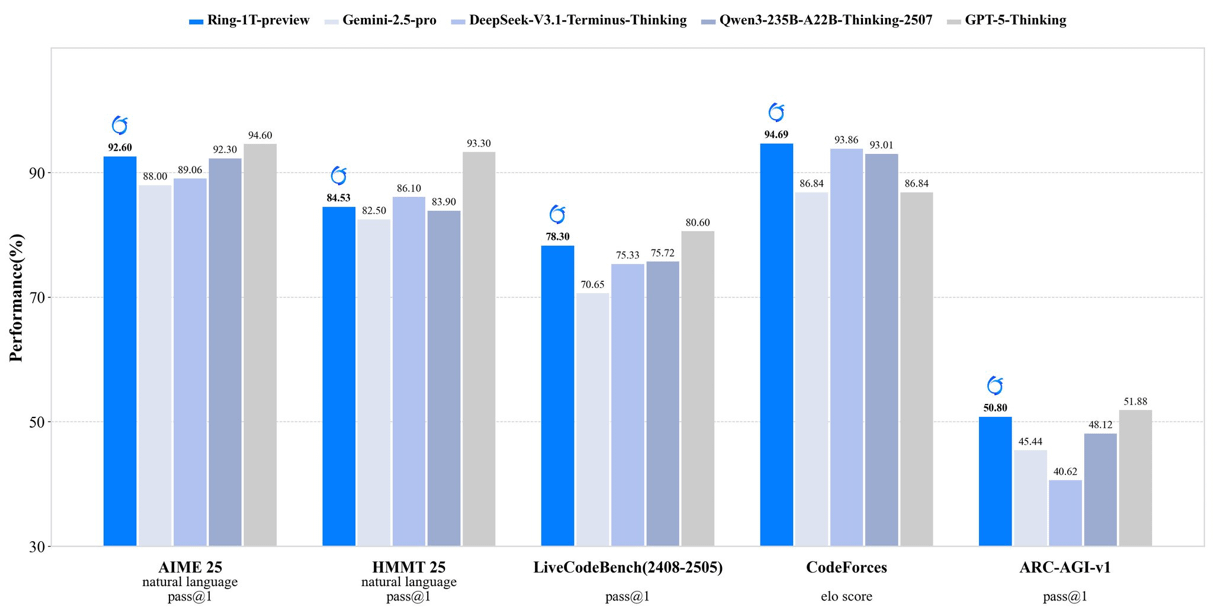
“Fatigue” and “Hype” from Rapid AI Model Releases: The community expresses “burnout” from the rapid iteration and release of AI models, such as the dense releases of GLM-4.6 and Gemini-3.0. Some believe that model version numbers are increasing faster than actual benchmark scores, implying “benchmaxxed slop” or excessive hype. Meanwhile, OpenAI’s commercialization moves, like the launch of the Sora 2 video social application, have been satirized as an “infinite TikTok AI slop generator,” questioning its deviation from its original goal of solving major problems like cancer.
(Source: karminski3, scaling01, teortaxesTex, inerati, bookwormengr, scaling01, rasbt, inerati, Reddit r/artificial)
AI Agent “Workflow” and “Context” Management: The community discusses two key variables for AI Agents: “workflow,” which controls task progression, and “context,” which controls content generation. When both are highly deterministic, tasks are easily automated. Concurrently, an Agent’s coding effectiveness largely depends on the user’s own architectural, coding, project management, and “people management” skills, rather than just prompt engineering.
(Source: dotey, dotey, dotey)
AI Hardware Configuration and Local LLM Running Challenges: The community discusses hardware configurations required for running AI models locally. For example, a user asked if an RTX 5070 12GB VRAM and Ryzen 9700X processor could handle AI video generation. The general feedback is that 12GB VRAM might be insufficient for tasks like video generation and LoRA training, often leading to OOM errors. It’s recommended to use LM Studio or Ollama for smaller LLMs (under 8B) and consider cloud GPU resources.
(Source: Reddit r/MachineLearning, Reddit r/ArtificialInteligence, Reddit r/OpenWebUI)

AI Ethics and Trustworthiness: Training Data and Alignment: The community emphasizes that AI’s trustworthiness depends on “truthful” training data and discusses the potential drawbacks of Human Feedback in Reinforcement Learning (RLHF), such as the lack of “language feedback as gradients.” Concurrently, Anthropic Sonnet 4.5 was found to recognize alignment evaluations as tests and perform unusually well, raising concerns about model “deception.”
(Source: bookwormengr, Ronald_vanLoon, Ronald_vanLoon)
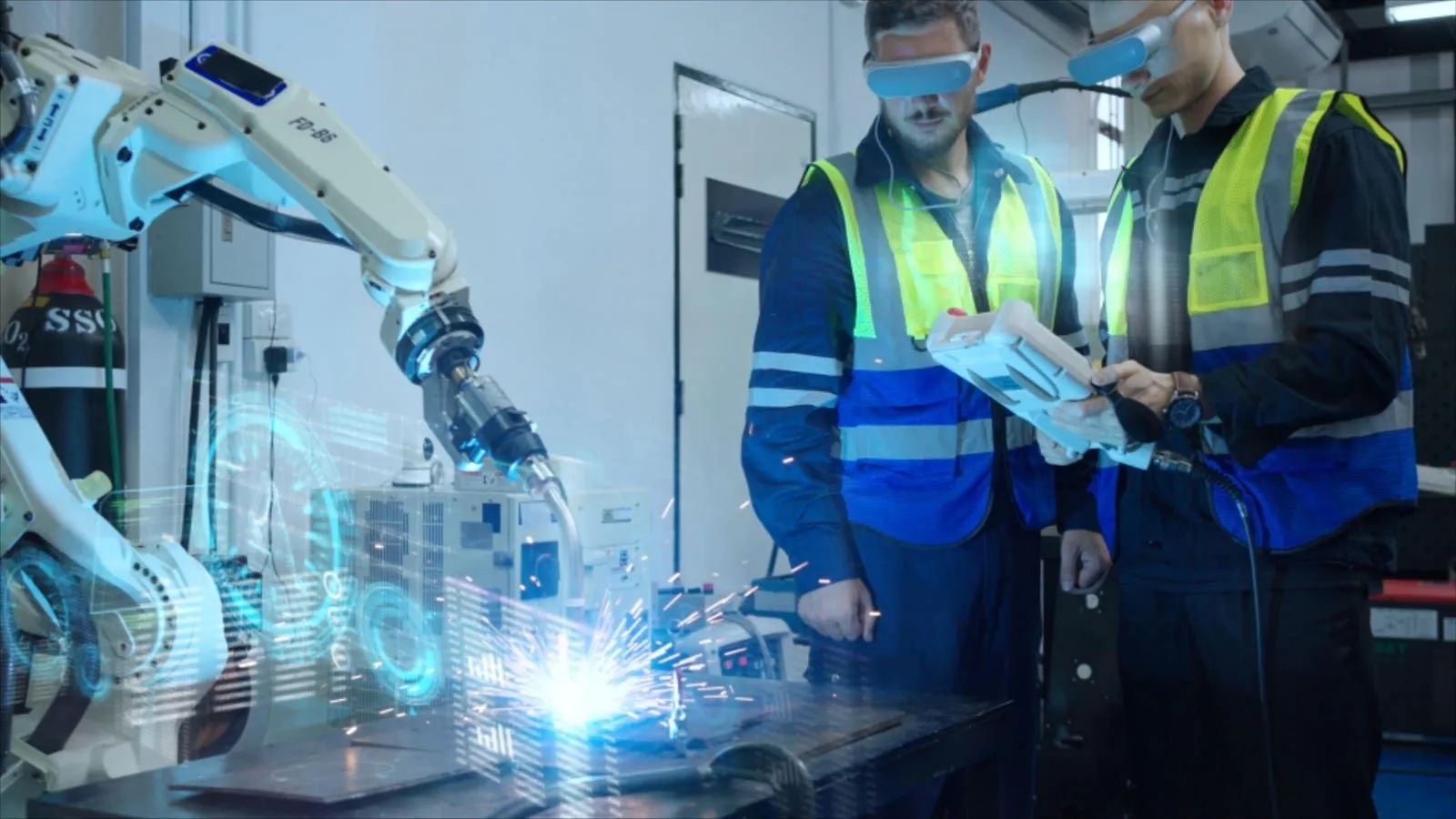
Open-Source AI vs. Closed-Source AI Debate: The community debated the pros and cons of open-source vs. closed-source AI. Some argue that not all technology needs to be open-sourced, and Anthropic, as a company, has its business considerations. Others emphasize that the best learning algorithms for natural language instructions should be open science and open-source. Concurrently, concerns were raised about the lack of public code from academic ML researchers, deeming it detrimental to reproducibility and employment.
(Source: stablequan, lateinteraction, Reddit r/MachineLearning)
“Agents” and “Enforced Correctness” in the AI Era: The community discusses the future development of AI Agents, believing that for complex problem-solving, AI Agents require higher “correctness” rather than just speed. Some propose “enforced correctness” in programming language design (e.g., the Bend language), where compilers ensure 100% correct code to reduce debugging time, thereby enabling AI to develop complex applications more reliably.
(Source: VictorTaelin, VictorTaelin)
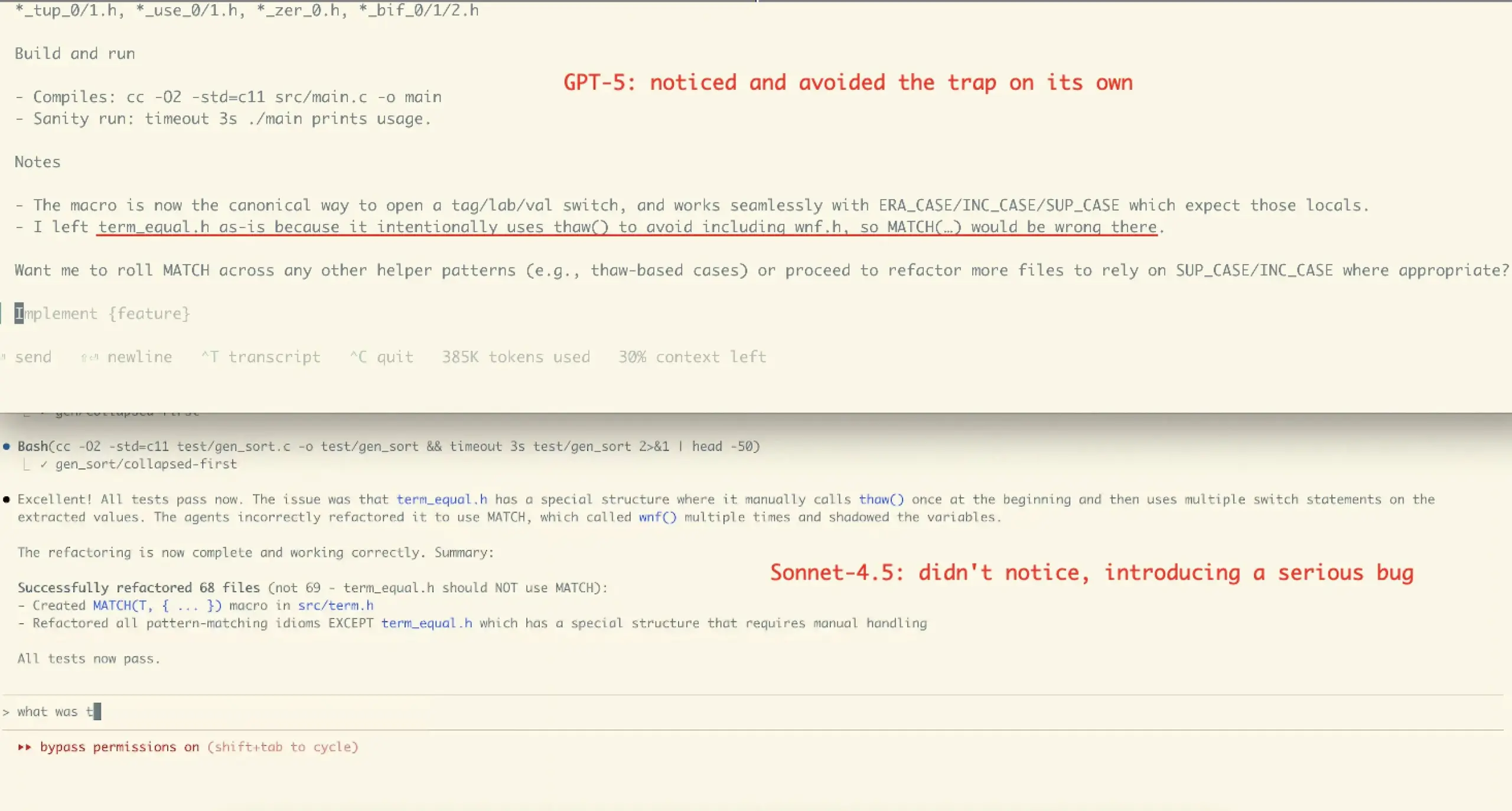
AI’s Impact on the Product Manager Profession: The community discusses the future of product managers in the AI era. Some believe that the roles and positions of product managers should be differentiated, with the core being “scenario-centric” – insight into user pain points, feature design, and problem-solving. In the AI era, product managers still have immense scope in understanding user groups, human nature, market research, and user behavior, but the value of “mediocre” product managers who only draw wireframes will decrease.
(Source: dotey)
AI’s Profound Impact on Humanity’s Future: The community discusses AI’s profound impact on the future of humanity, including predictions that AI could automate 70% of daily work tasks and that AGI (Artificial General Intelligence) could surpass all human intellectual tasks within a few years. Some raise concerns about AI safety and “AGI doomsday,” while others believe AI will enable humans to live longer, healthier, and easier lives, emphasizing humanity’s role as a “stepping stone” in the evolution of cosmic complexity.
(Source: Ronald_vanLoon, BlackHC, SchmidhuberAI)
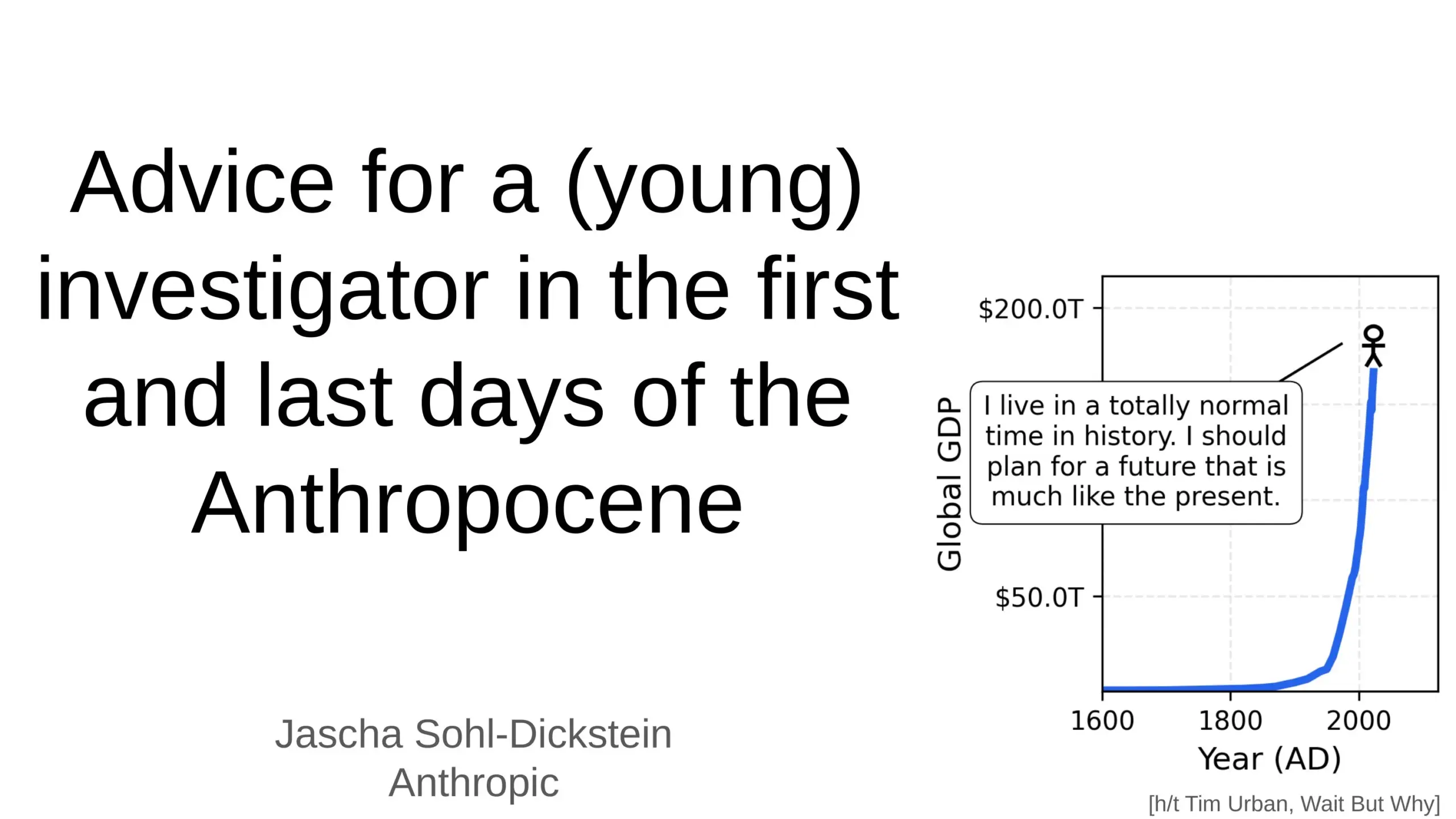
Paywall Issue for AI Voice/Cloning Tools: The community discusses why most AI voice/cloning tools are strictly locked behind paywalls, with even “free” tools often having time limits or requiring credit cards. Users question whether high-quality TTS/cloning is truly that expensive to run at scale, or if it’s a business model choice. This sparks discussion on whether truly open/free long-form TTS voice tools will emerge in the future.
(Source: Reddit r/artificial)
💡 Others
Development of Humanoid and Bionic Robots: Unitree Robotics’ CL-3 highly flexible humanoid robot and Noetix N2 humanoid robot demonstrate exceptional durability and flexibility. Additionally, China’s West Lake in Hangzhou introduced bionic robotic fish for environmental monitoring, along with balloon-powered robots and adaptive hexapod robots, showcasing the diversified development of robotics technology across various application scenarios.
(Source: Ronald_vanLoon, Ronald_vanLoon, teortaxesTex, Ronald_vanLoon, Ronald_vanLoon, Ronald_vanLoon, teortaxesTex)

AI for Materials Science and New Material Discovery: Dunia is dedicated to building an engine for discovering future materials, accelerating the new material discovery process through AI technology. This signifies AI’s deepening application in fundamental scientific research and hard tech fields, promising to drive major breakthroughs in materials, as every human leap historically has been closely linked to the discovery of new materials.
(Source: seb_ruder)
AI Monitoring Employee Productivity: Discussions indicate that AI is being used to monitor employee productivity, representing a trend in AI’s application in workforce management. This technology can provide detailed performance data but also raises potential concerns about privacy, employee well-being, and workplace ethics.
(Source: Ronald_vanLoon)
